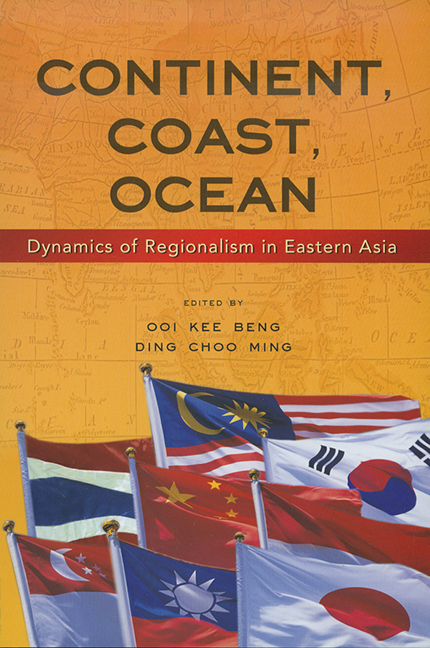Book contents
- Frontmatter
- Contents
- Foreword by Shamsul A.B.
- Contributors
- Introduction
- PART ONE PUTTING JAPANESE IMPERIAL HISTORY TO REST
- PART TWO THE ECONOMICS OF REGIONAL INTEGRATION
- 3 Myths and Miracles of Economic Development in East Asia: Policy Lessons for Malaysia in the Twenty-first Century
- 4 Towards a New Paradigm in East Asian Economic Studies
- PART THREE INTER-REGIONALISM AND REGIONALISM
- PART FOUR NEW KNOWLEDGE, NEW PROBLEMS, NEW SOLUTIONS
- Index
3 - Myths and Miracles of Economic Development in East Asia: Policy Lessons for Malaysia in the Twenty-first Century
from PART TWO - THE ECONOMICS OF REGIONAL INTEGRATION
Published online by Cambridge University Press: 21 October 2015
- Frontmatter
- Contents
- Foreword by Shamsul A.B.
- Contributors
- Introduction
- PART ONE PUTTING JAPANESE IMPERIAL HISTORY TO REST
- PART TWO THE ECONOMICS OF REGIONAL INTEGRATION
- 3 Myths and Miracles of Economic Development in East Asia: Policy Lessons for Malaysia in the Twenty-first Century
- 4 Towards a New Paradigm in East Asian Economic Studies
- PART THREE INTER-REGIONALISM AND REGIONALISM
- PART FOUR NEW KNOWLEDGE, NEW PROBLEMS, NEW SOLUTIONS
- Index
Summary
INTRODUCTION
In its broadest sense, economic development deals with improving the quality of life of people. It is thus not just the goal of developing countries alone. Rather, it has been the central quest of all modern nations. Malthus, for example, calls the study of the causes of poverty and wealth of nations to be the grand object of all inquiries in political economy. The focus on economic growth is motivated by the fact that increases in Gross Domestic Product (GDP) per capita over time can have a significant impact on the reduction of hunger and poverty. As summarized by Easterly (2002: 13), empirical evidence shows clearly that “fast growth went with fast poverty reduction, and overall economic contraction went with increased poverty”. The pursuit of economic growth has led to an extensive research interest in East Asian development, even before the publication of The East Asian Miracle (World Bank 1993). The 1993 World Bank study turned out to be controversial and stimulated many countering studies, especially on the issue of an East Asian model of development. However, the Asian Financial Crisis (AFC) in 1997 provoke considerable rethinking on this “East Asian model”. Post-crisis, the debate continues to engage the minds of both academics and the public even as some of the miracle economies continue to struggle to recapture the golden years of growth.
The objective of this chapter is to review the factors that contributed to rapid growth in East Asia before the AFC in order to provide some policy suggestions for Malaysia. The chapter is organized as follows: After the introduction, the East Asian miracle is explained in Section 2; Section 3 analyses the sources of growth that underpinned the miracle while Section 4 discusses to what extent the miracle was a mirage in light of the AFC; in Section 5, some policy lessons for Malaysia's long-term development are suggested; Section 6 summarizes the main findings of this chapter.
THE EAST ASIAN MIRACLE
As stated in the Overview of the World Bank (1993: 1), the miracle in East Asia consisted of a record of high and sustained economic growth between 1965 and 1990, more so because it was associated with poverty reduction and declining inequality.
- Type
- Chapter
- Information
- Continent, Coast, OceanDynamics of Regionalism in Eastern Asia, pp. 59 - 83Publisher: ISEAS–Yusof Ishak InstitutePrint publication year: 2007

